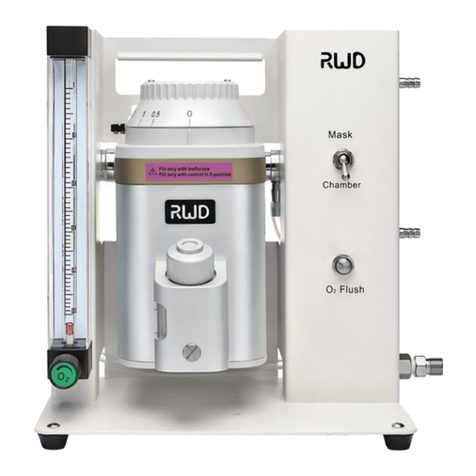
© 2021 Shenzhen RWD Life Science Co., Ltd, All rights reserved.
Intellectual Property Right
The intellectual property rights of this product and its user manual belong to RWD Life Science
Co., Ltd (hereinafter referred to as the RWD), including, but not limited to patent, trademark,
copyright etc.
RWD reserves final interpretation right of this user manual.
RWD have the right to use the instruction as confidential information. Any individual and/or
organization shall not disclose the instruction of all or part of the information by any means
without RWD’s written permission. Nor shall any other person or organization be allowed to
obtain all or part of the information of this user manual by any means.
No individual and/or organization shall publish, modify, reproduce, issue, rental, adapted, and
translated into other languages without RWD’s writen permission.
is RWD’s registered trademark or mark, these trademarks and the related security
mark belong to RWD’s intangible property. The use of non RWD’s trademark or mark in this user
manual are only for editing purposes, without other purposes, the rights belong to their respective
rights owners.
Statement
RWD reserves the right to modify the content of this manual without prior notice.
RWD reserves the right to change the technology without prior notice.
RWD reserves the right to modify the product specifications without prior notice.
RWD does not guarantee the information in any forms, including (but not limited to) the
responsibility of proposing the implied merchantability and suitability for a specific purpose.
RWD in only the following conditions is considered to be responsible for the safety, reliability and
performance of the instruments, i.e.:
Assembly operation, expansion, adjustment, improvements and repairs carried out by RWD
authorized personnel;
Relevant electrical equipment in line with national standards;
The instrument is operated according to the user manual.
RWD is not responsible for the products’ safety, reliability or operation status in the following
conditions:
Components are disassembled, stretched or debugged;
Non RWD authorized personnel repairs or alterations to the instruments;
Product may not in accordance with the manual.





























